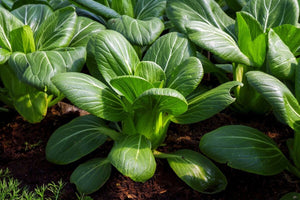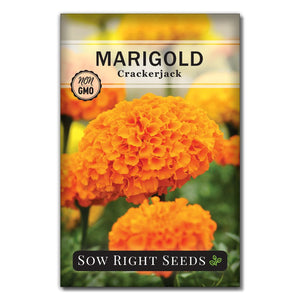How to Identify and Get Rid of Colorado Potato Bugs Chemical-Free
PestsPotato-Potatho. Bug or Beetle. Will the real Colorado Potato Beetle please stand up?
With so many bugs and beetles going by the name of “Potato Bug,” it’s crucial to know which bugs are truly harmful in your garden. Knowing the difference between a Roly-Poly, False Potato Beetle, and the Colorado Potato Beetle will help you know when your garden is in trouble.

Identifying Colorado Potato Beetles
It can get confusing when there are several insects with the common name of potato bug. To be clear, we are talking about the Colorado Potato Beetle. (Leptinotarsa decemlineata)
The adult Colorado Potato Beetle is easy to recognize. Adult bugs are about 3/8 of an inch long and have a yellow-orange body with striped wing covers. The wing covers are yellowish and have ten black stripes, five on each side.
There are other striped garden pests, such as cucumber beetles, so it helps to see pictures for correct identification.
The Colorado potato beetle is also known as the ten-lined potato beetle, the ten-striped spearman, and the “potato bug.”
Although native to the Rocky Mountains, potato beetles first became a pest in Nebraska. Since then, they have spread throughout the United States and into Europe and Asia.

Lifecycle of Potato Beetles
The lifecycle of Colorado Potato Beetles can be very fast. The whole process of eggs to adult can happen in as little as 21 days during optimal temperatures around 83ºF.
Egg Stage
Potato bug eggs are bright yellow to orange and oval-shaped, about 1.5 mm long.
Female beetles lay clusters of eggs (usually 10-30) on the underside of host plant leaves, typically in late spring to early summer.
Eggs hatch in 4 - 15 days, depending on the temperature. Warmer temperatures accelerate hatching.
Look for clusters of tiny, brightly colored eggs on the underside of leaves.

Larval Stage
Newly hatched larvae are small and dark red with black heads. As they grow, they become larger and lighter colored. They have a humped back and a row of black spots along each side.
Potato bug larvae go through four growth stages called instars. After each molt, they become more destructive as they grow larger and eat more.
This stage lasts about 10-20 days, with each instar taking 2-5 days.
Larvae are voracious feeders, consuming large amounts of foliage and causing significant damage to plants. They can defoliate entire plants if populations are high.

Pupal Stage
Once larvae are fully grown, they drop down to the soil and burrow several inches below the surface to pupate.
Pupae are orange and about 9-10 mm long.
The pupal stage lasts around 5-10 days. Pupation occurs in the soil where the larvae transform into adults.
Adult Stage
Adult beetles emerge from the soil with their distinctive yellow and black striped wing covers, ready to start the cycle again.
Adult beetles feed on host plants and begin mating within a few days of emergence. Females can lay hundreds of eggs over several weeks.
Adults can live for several months, often overwintering in the soil and re-emerging in spring to continue the cycle.
Adult potato beetles burrow into the soil to overwinter in colder climates, emerging in the spring when temperatures rise. This hibernation period can last several months.
Key Points to Remember
- Timing: Monitor your garden regularly during late spring and summer to identify and control potato beetles at each stage. During the summer months, all life stages can be present at the same time.
- Temperature Influence: The beetle’s development speed is temperature-dependent, so warmer conditions can lead to faster lifecycles and more generations per year.

Effective Potato Bug Control Methods for Home Gardeners
As soon as adult potato beetles emerge in the spring, it is time to take action.
The most effective method is to remove any eggs, larvae, and adults you find.
You will want to wear gloves for this part.
- Closely check the underside of plant leaves for eggs and crush any you find.
- Pick off adults and larvae and drop them into a bucket of soapy water. They move slowly and don’t fly away, so this is fairly easy.
Row covers can cover crops and keep beetles from flying in. However, these won’t keep beetles from coming up through the soil.
Plastic-lined trenches can be used around large gardens. These are wide and deep enough that the larvae can’t climb to an area with soil.
If you have a year with a bad infestation of potato beetles, it may be worth not planting any nightshades the following season. Make sure you eliminate any weeds that are also in the nightshade family.
Remove plant debris and apply a thick layer of straw mulch to make it harder for the beetles to complete their lifecycle by returning to and emerging from the soil.
Chemical controls aren’t recommended since potato bugs have become resistant to many chemicals.

Potato Beetle Damage
But I don’t grow potatoes, so I don’t need to worry about potato bugs, right? Wrong.
Although potato beetles have a highly specific diet, it does include all plants in the nightshade family. This means you can find potato bugs on tomato plants, eggplants, and peppers.
The Colorado Potato Beetle loves to feast on nightshade plants and this includes weeds as well as crop plants. Gardeners who don’t grow such crops may never see potato bugs in their gardens. But, if you’re growing any of these popular garden vegetables, you’ll likely see Colorado potato beetles, even if you’re not in Colorado or growing potatoes.
The problem with potato bugs is that both larvae and adults feed on leaves and can completely defoliate plants. Then, as we know, the plant has no way to photosynthesize, and it will die. If this happens before potato tubers are formed, there goes your whole potato crop.
The battle against Colorado Potato Beetles may seem daunting, but it is entirely manageable with vigilance and the right strategies. By accurately identifying these pests at each stage of their lifecycle and understanding their habits, you can take proactive steps to protect your crops.
Remember, the easiest methods can be highly effective. The key to success lies in early detection and consistent management. Equip yourself with knowledge and act promptly to keep your garden thriving and beetle-free.

Additional Resources
More information about Not Quite Potato Beetles:
The roly-poly or pill bug is sometimes called a potato bug, and the Jerusalem cricket also has this common name. But neither of these is a beetle. The False Potato Beetle is easy to identify in the larval stage, which is more of a light brown, almost white color. You can see some helpful False Potato Beetle pictures here from the University of Kentucky.
There is also the Three-Lined Potato Beetle that will damage tomatillos. It looks a lot like the Colorado Potato Beetle but only has three stripes. Utah State University has pictures and information about the Three-Lined Potato Beetle.
For help getting rid of other beetle pests, take a look at these informative guides:









Leave a comment